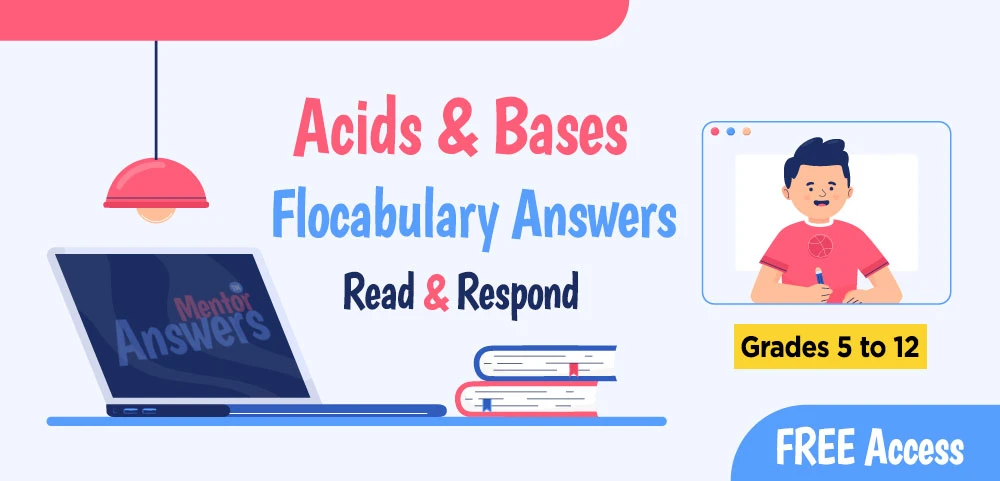Are you looking for a reliable source of answers for the Acids & Bases Flocabulary Quiz, Read & Respond? You’ve come to the right place!
We have a team of teachers who have checked and verified the correct answers for all the questions. You can trust our expertise and save time by using our answers key.
Acids & Bases Flocabulary Quiz Answers Key
- a solution with a pH of 13
- a solution with a pH of 2
- a solution with a pH of 7
- a solution with a pH of 9
- a solution with a pH of 13
- a solution with a pH of 2
- a solution with a pH of 7
- a solution with a pH of 9
- a solution with a pH of 14
- a solution with a pH of 2FeS
- a solution with a pH of 7
- a solution with a pH of 9
- acid.
- base.
- neutral solution.
- pH indicator.
- physical change.
- chemical reaction.
- distillation.
- concentration.
- It tastes more sour than the reactants.
- It feels more slippery than the reactants.
- It has a pH closer to 0 than either reactant had.
- It has a pH closer to 7 than either reactant had.
- indicator.
- incinerator.
- alkaline.
- pH unit.
- red cabbage juice.
- a different acid and base
- water and salt
- baking soda and vinegar
- The substance felt slippery when she touched it with gloves.
- The substance did not react with metal.
- The substance turned litmus paper red.
- The substance did not conduct electricity.
- Neither substance smelled or looked different after she combined them.
- Both substances turned litmus paper blue before and after she combined them.
- There was no change in pH after she combined the substances.
- The pH was closer to neutral after she combined the substances.
Acids & Bases Flocabulary Read & Respond Answers
Expand your knowledge by exploring the Read & Respond answers related to the topic of our Subject:
- People should always wear gloves to touch bases.
- Most people have only ever seen acid in a science lab.
- Acids and bases are commonly used for many tasks in daily life.
- Foods that are basic don’t have any particular taste.
- When they dissociate in water, acids produce hydrogen ions and bases accept hydrogen ions.
- In their chemical formulae, acids always have an H, and bases never do.
- Acids dissociate in water, and bases do not dissociate in water.
- Bases do not have protons, and acids do.
- It is twice as acidic as an acid with a pH of 4.
- They are equally acidic.
- It is 100 times more acidic than an acid with a pH of 4.
- It 10 times more acidic than an acid with a pH of 4.
- Acidic solutions have a pH between 0 and 6.
- The pH scale is used to describe a substance’s acidity or alkalinity.
- The H in pH stands for hydrogen ions.
- Basic solutions have a pH between 8 and 14.
- is acidic.
- has an electrical charge.
- is a weak base.
- is a neutral substance.
- a substance created from atoms of two or more elements
- a word formed by combining two or more words
- to make a problem or mistake worse
- made up of many parts
- “The products have new properties.”
- “…the products are always a salt and water.”
- “Let’s say the reactants are hydrogen chloride (HCl) and sodium hydroxide (NaOH).”
- “The H+ from the HCl combines with the OH- from the NaOH to form H2O, also known as water.”
- How to Treat Wasp Stings
- Neutralization Reactions in Everyday Life
- Indigestion, Antacids and pH
- Proper pH at the Pool
If you have any questions or need more answers key for your favorite subject, please leave a comment below or contact us through our website. We would love to hear from you and assist you in your learning journey.
Are you interested in delving into additional subjects related to Flocabulary? Check Here To Get All Flocabulary Answers Key

